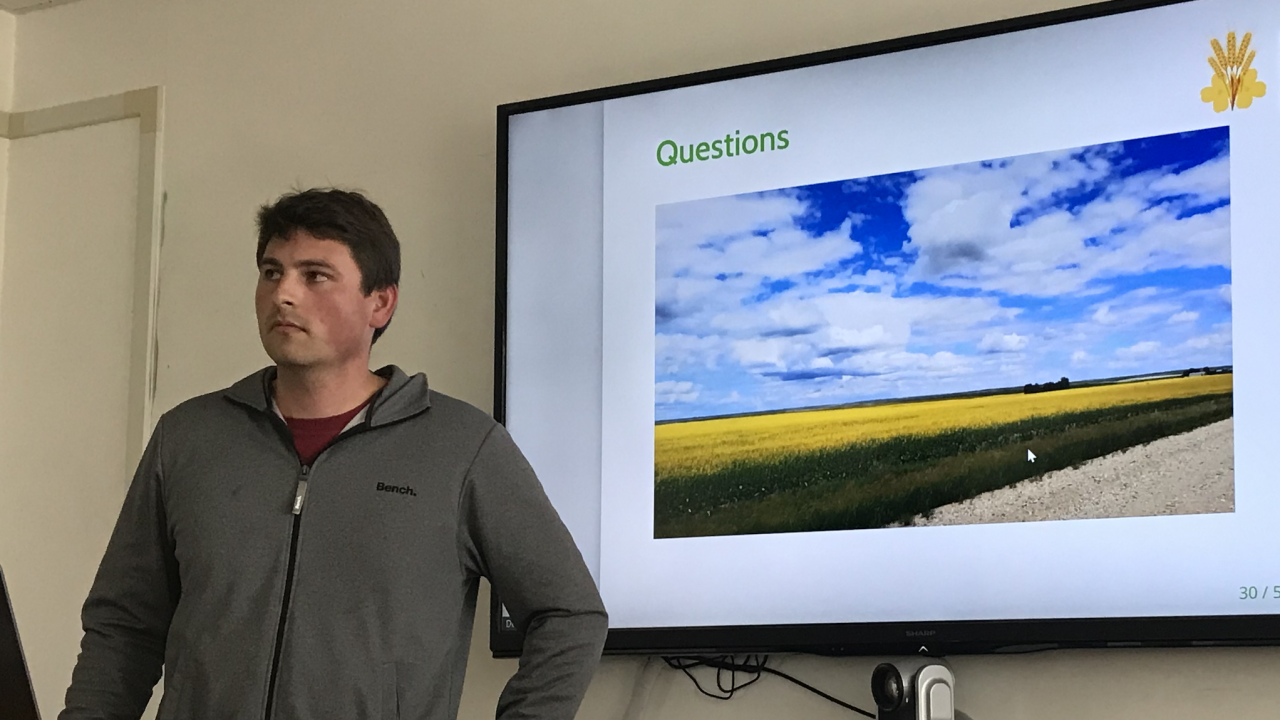
Lab Seminar - A New Field-Level Measure of the Stock of Soil Organic Carbon.
Devin Serfas presented findings from his work developing and applying models of soil carbon dynamics to field-level soil and crop production data from Saskatchewan. Agricultural soil carbon sequestration is considered by many to be an important method for reducing atmospheric carbon. Agricultural practices and production decisions affect the rate at which carbon from the atmosphere enters the soil and the rate at which carbon from the soil mineralizes and leaves the soil as CO2. For example, in Saskatchewan, farmers choose between growing one of several types of crops or tilling their fields and letting them lie fallow for a season. The different crop varieties store carbon at different rates, while tilling increases the rate carbon leaves the soil. Subsidies and other agricultural policies can incentivize farmers to adopt practices that increase the level of carbon stored on their land, reducing atmospheric carbon.
Devin developed a modeling framework to estimate the external social benefit of reducing atmospheric carbon from carbon storage on agricultural land. His modeling framework accounted for two key economic and geochemical factors. First, subsidies often must be paid to any firm using the desired practice, even if they would have adopted it without the subsidy. Payments to these firms have no net effect on carbon storage but increase the policy's overall cost, reducing the net social benefit. Second, soil does not store carbon permanently, and it can be re-emitted if firms change their production decisions. Using this modeling framework, Devin estimated the external social benefits of changes in soil carbon stock on Saskatchewan agricultural land.